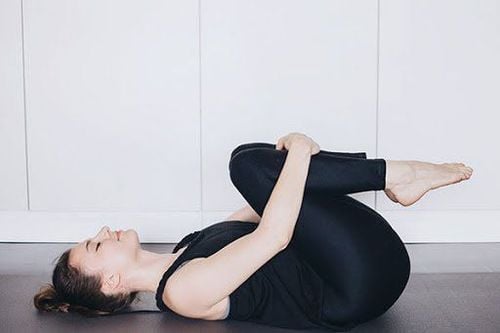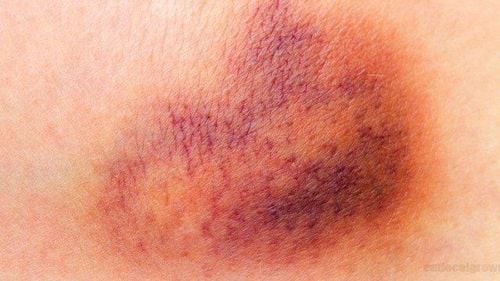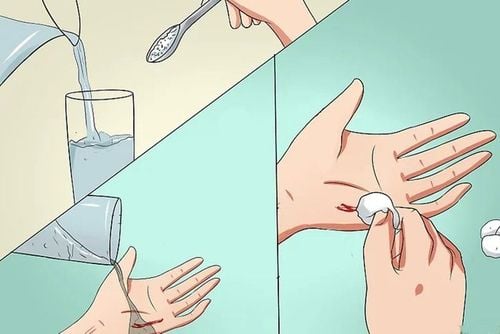This is an automatically translated article.
Abdominal tension causes symptoms that affect the patient's daily life. The above situation may stem from your daily habits. Therefore, learning about tummy tuck, its causes, and prevention measures will help you avoid it.
1. What is a tummy tuck?
A tummy tuck is a stretch or rupture of the abdominal muscles. This phenomenon is also known as pulled muscle. A tummy tuck can be caused by the following:
Sudden twisting or rapid movement of the abdominal muscles Excessive exercise and high intensity Overuse and inadequate rest Playing demanding sports Vigorous exercise but incorrect technique such as: Running, turning and jumping Heavy lifting Laugh, cough or sneeze

Tập thể dục quá sức có thể là nguyên nhân dẫn đến tình trạng căng da bụng
2. Signs of a tummy tuck
During a tummy tuck, the surface of the stomach may become inflamed. The patient can feel the abdominal muscles contract and move. Also, some of the symptoms of a tummy tuck include:
Sudden abdominal pain Swelling Bruising Pain or difficulty stretching or bending muscles Muscle spasms or cramps Depending on the severity of the condition, you may have difficulty walking, standing, or bending forward or to the side.
The symptoms of a tummy tuck can be confused with an abdominal hernia. Although some of the symptoms can be similar, a hernia occurs when an internal organ protrudes through the wall of the muscle or tissue that contains it. Distinguishing symptoms of hernia such as:
Abnormal mass in the abdomen Persistent pain or burning sensation Nausea and vomiting Constipation

Táo bón là triệu chứng phân biệt của bệnh thoát vị
3. How to treat tummy tuck
Although the symptoms of a tummy tuck have a significant impact on the patient's daily life, these conditions can be treated at home. Mild abdominoplasty, when treated early, will heal within a few weeks. Here are some tummy tuck treatments that you should know about:
3.1. Cold compress
Cold compress will help improve the symptoms of tummy tuck such as bleeding, pain and swelling. At the same time, this method will help reduce inflammation. How to do it includes:
Apply an ice pack to the stretched abdomen Wrap a cloth/towel around the cold pack. Gently apply the cold pack to your wound for 10 to 15 minutes at a time. Repeat this process every hour for the first few days of the injury.
3.2. Hot compress
Heat helps relax muscles, relieve tension and relieve pain. Heat also increases blood flow to the affected area promoting healing and reducing inflammation. How to do this:
Take a warm patch (in case there is no warm patch, put the rice in a clean sock and tie it. Microwave the sock for 1 to 2 minutes, make sure the socks are not tight.) too hot. Apply warm compresses to the affected area for up to 20 minutes at a time. Repeat this process every hour for the first few days of injury.
3.3. Over-the-counter (OTC) pain relievers
You can also take over-the-counter medications to relieve symptoms of the pain. Some OTC medications are used such as:
Nonsteroidal anti-inflammatory drugs (NSAIDs): Ibuprofen (Advil) and naproxen sodium (Aleve) Pain relievers such as aspirin (Bayer) and acetaminophen (Tylenol)

Thuốc giảm đau không kê đơn là một phương pháp điều trị căng da bụng
3.4. Abdominal compression
The patient may be instructed to wear an abdominal bandage or bandage to help compress the abdomen. Pressure can help minimize movement and swelling.
3.5. Rest
Patients with tummy tuck should spend a lot of time resting to reduce stress and fatigue.
3.6. Practice
Once the symptoms of a tummy tuck have subsided, the patient should begin exercises to strengthen the abdominal muscles and muscles. Some exercises will bring effective treatment such as:
Rolling motion
Lie on your back with knees bent. Keep the arm by your side. Raise your head and shoulders a few inches. Bring your arms up to thigh height. Hold for 6 seconds. Lower your back. Do 3 sets of 8 repetitions. To tilt the pelvis
Lie on your back with knees bent. Engage and tighten your abs as you pull in, pulling your navel toward your spine. Press your lower back into the floor as you tilt your hips and pelvis back slightly. Hold for 6 seconds. Relax and return to the starting position. Do 3 sets of 8 repetitions.

Động tác cuộn tròn giúp cải thiện triệu chứng của căng da bụng
4. Preventing tummy tuck
For any kind of disease, prevention is better than cure. Therefore, to prevent symptoms and complications caused by tummy tuck, you should take preventive measures. One of the ways to prevent this condition is to exercise regularly. Some exercise notes to prevent tummy tuck include:
Warm up and stretch before engaging in any physical activity. Do your post-workout cooldown. Take time off each week to let your muscles rest. Start slowly, gradually increasing your intensity and duration whenever you begin a new exercise program.
Please dial HOTLINE for more information or register for an appointment HERE. Download MyVinmec app to make appointments faster and to manage your bookings easily.
Reference source: healthline.com












